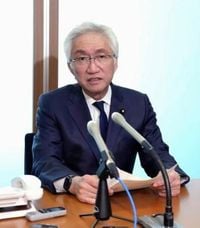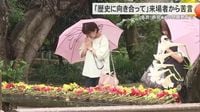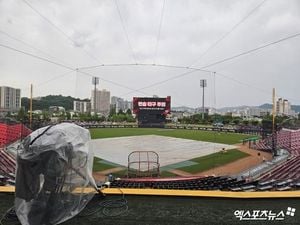In a significant turn of events, Shoji Nishida, a member of Japan's Liberal Democratic Party (LDP), publicly apologized on May 9, 2025, for remarks he made regarding the Himeyuri Tower, a memorial dedicated to student nurses who perished during the Battle of Okinawa. His comments, which suggested that the historical narratives presented at the memorial were a form of "rewriting history," sparked outrage among many, particularly in Okinawa, where the memories of the war remain deeply poignant.
Nishida's controversial statement was made during a symposium in Naha City on May 3, where he claimed that the exhibits at the Himeyuri Tower framed the events of the war in a manner that was biased against the Japanese military. He stated, "The Japanese military kept coming in, and the Himeyuri team ended up dying. Then the Americans came in, and Okinawa was liberated. This is how history is being rewritten," a comment that many interpreted as dismissive of the suffering experienced by the Okinawan people during the war.
Following backlash from both local residents and opposition parties, Nishida initially resisted calls to retract his statements. However, he later acknowledged the insensitivity of his remarks, recognizing the emotional weight they carried for the people of Okinawa. In his apology, he expressed, "I felt the great anxiety and trauma that still remains for the people of Okinawa Prefecture. My remarks regarding the Himeyuri Tower were inappropriate, and I would like to sincerely apologize to the people of Okinawa."
During his press conference, Nishida emphasized that his comments were based on his experiences visiting the Himeyuri Tower approximately 20 years ago. He explained that during this visit, he encountered descriptions in the exhibits that he felt were reflective of a "Tokyo Trial perspective," referring to the post-World War II trials where Japan was held accountable by the Allied powers. He claimed, "The narratives presented at the tower depict a one-sided view of history, which I believe is problematic."
Despite his apology, Nishida maintained that he would not retract his assertions about the exhibits. He stated, "I believe the facts are as I have stated," indicating that he still sees merit in his original critique of the historical narratives presented at the memorial.
The Himeyuri Tower, established to honor the memories of the young nurses who served during the war, has been a focal point of educational efforts in Okinawa, emphasizing the tragedies of the conflict. The exhibits are based on testimonies from surviving student nurses and others who experienced the horrors of the war firsthand. Critics of Nishida's comments argue that they undermine the historical significance of the memorial and the experiences of those who suffered.
In light of the controversy, Nishida's statements have drawn attention to the broader issue of how history is taught and remembered in Japan, particularly regarding the sensitive topic of the Okinawa War. Many residents of Okinawa have expressed frustration over what they perceive as a lack of understanding from mainland politicians about the lasting impact of the war on their community.
As part of his efforts to mend relations with the Okinawan people, Nishida concluded his apology by stating his commitment to improving the situation in Okinawa, saying, "I want to work towards a better understanding of Okinawa's feelings and improve the promotion of the region and the status agreement to help clear the hearts of the people of Okinawa as soon as possible." His remarks reflect a recognition of the need for greater sensitivity and awareness of the historical context surrounding the Himeyuri Tower and its significance.
This incident sheds light on the ongoing struggles within Japan regarding the interpretation and presentation of historical events, particularly those related to World War II. As discussions continue about how history is represented in education and memorials, the case of Nishida serves as a reminder of the importance of approaching such topics with care and respect.
Moreover, the reactions to Nishida's comments highlight the delicate balance that must be maintained when discussing historical narratives, especially in a country where memories of war remain vivid and deeply felt. For many in Okinawa, the Himeyuri Tower is more than just a memorial; it is a testament to the lives lost and the trauma endured during a tumultuous period in history.
As this story unfolds, it remains to be seen how Nishida's apology and the ensuing dialogue will influence future discussions around the presentation of history in Japan. Will this lead to a more nuanced understanding of the past, or will it further polarize opinions on how history should be remembered? Only time will tell.






